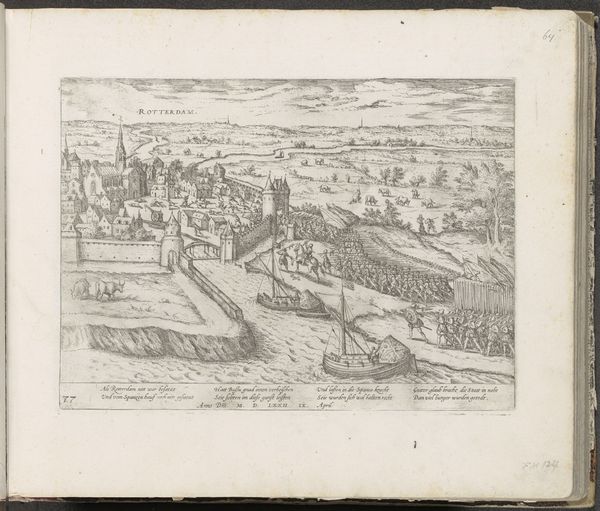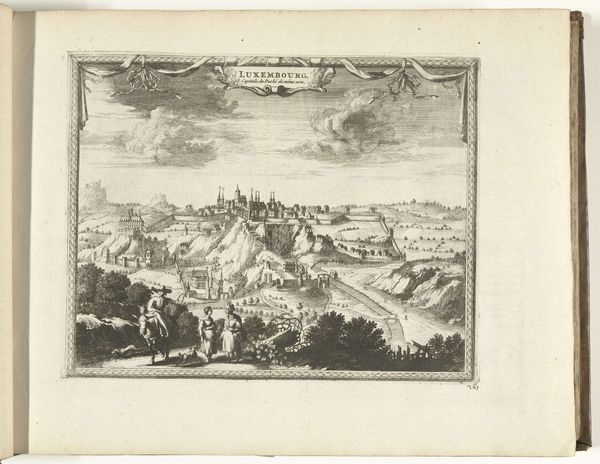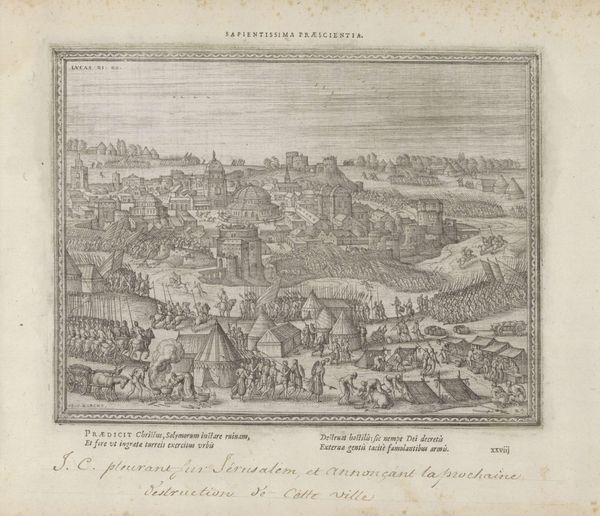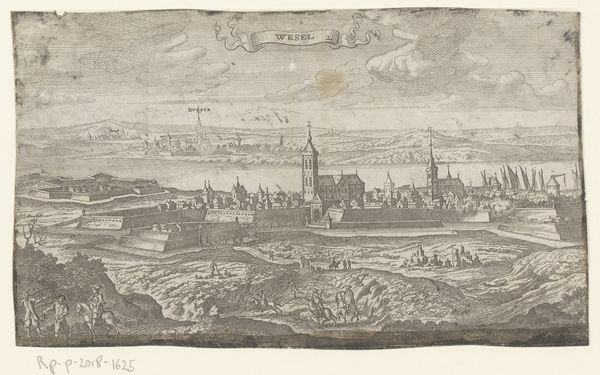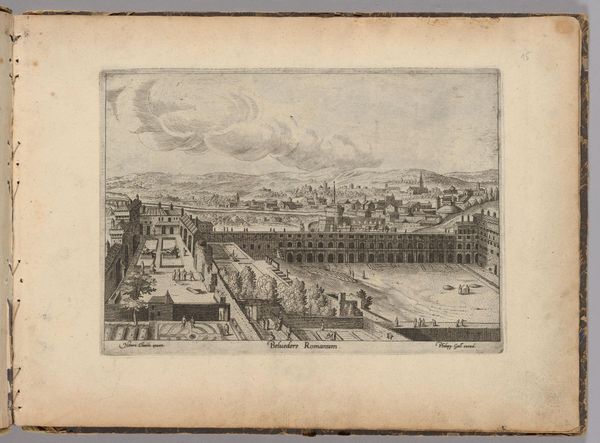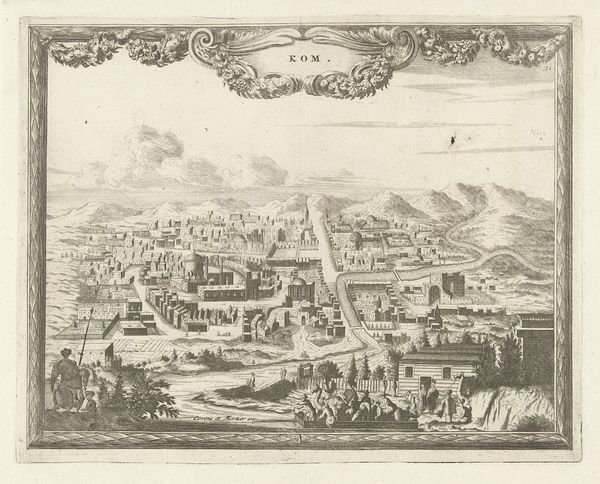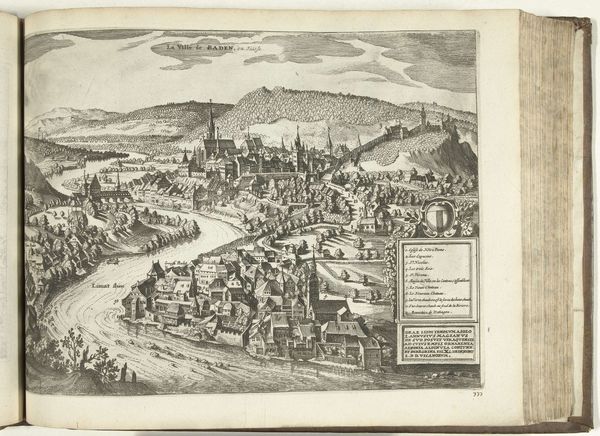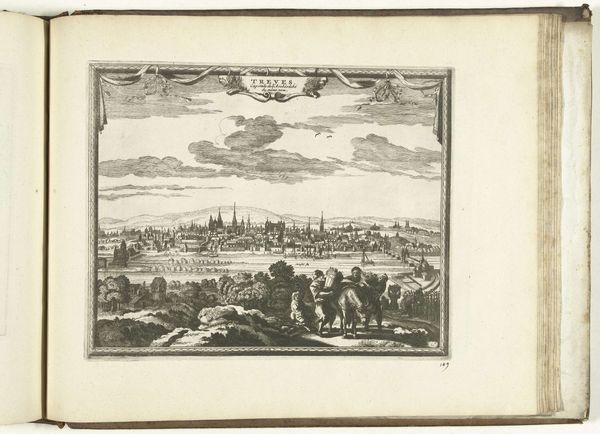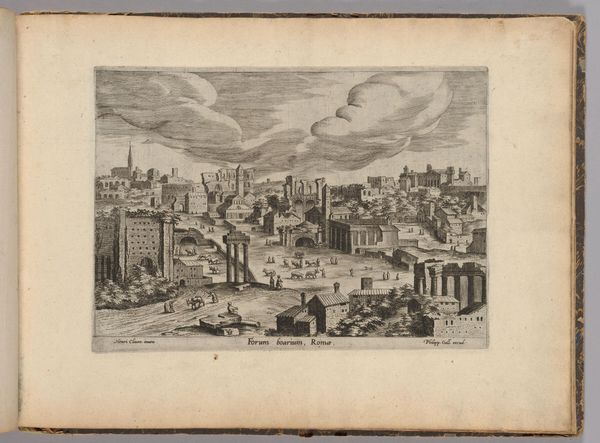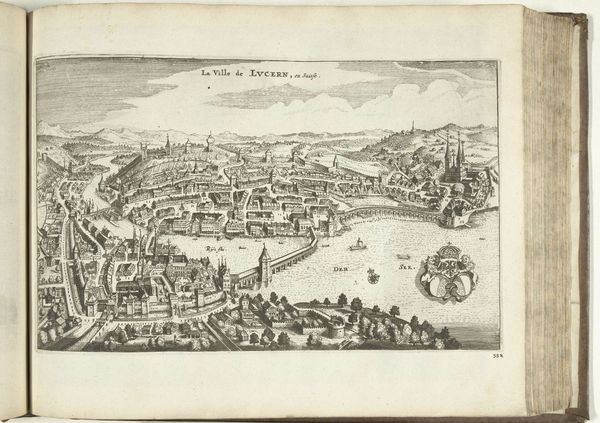
Dimensions: plate: 17.6 x 24.4 cm (6 15/16 x 9 5/8 in.)
Copyright: CC0 1.0
Curator: Hendrick van Cleve III's "Rome (Burgus Romae)" presents us with a bird's-eye view. The plate measures about 17 by 24 centimeters, small in scale, but dense in detail. Editor: The overall mood is surprisingly busy for such a small image! The etching technique gives it a crisp, almost frenetic energy. So many figures occupying the foreground. Curator: Consider the copperplate etching process. The labor, the artisan class responsible for its production—these prints circulated information and ideas. What symbols stand out? Editor: Well, the figures in the foreground seem engaged in everyday activities, perhaps commerce or recreation. It brings to mind the enduring symbol of the city square as a center of life. The tower is significant, too. Curator: Absolutely. The tower dominates, a visual marker, indicating power and control. The materials themselves – the ink, the paper – they all speak to early methods of disseminating knowledge. Editor: The tower does function like a visual anchor. It connects us to centuries of cultural continuity. It reminds us of the city's enduring presence. Curator: Examining the etching, we can appreciate the skill involved, and the social context of its making. Editor: And considering the iconography, the image is more than just a rendering; it's an assertion of Rome's significance across time.
Comments
No comments
Be the first to comment and join the conversation on the ultimate creative platform.

